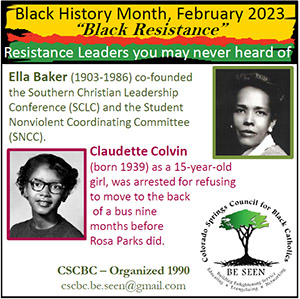Philanthropist Lafon supported many charitable causes
By Aisha C. Young
Although the name of Thomy Lafon is not widely known outside of Louisiana, at one time he was the wealthiest Black man in the United States and one of the country’s great philanthropists.
Lafon was born on Dec. 28, 1810, the son of a Frenchman and an enslaved Haitian woman. He is described as small, slender, and very handsome with warm hazel eyes, porcelain-white skin with a tinge of Mediterranean olive tone, and beautiful wavy, almost straight, brown hair that later in his life turned into shiny silver white. He was classified as an octoroon, having one-eighth African and seven-eighths white blood. Though he endured substantial legal and social discrimination, his ability to “pass as white” contributed to his success.
Very little information is available about his birth and childhood. Although no baptismal record can be found, he was a devout Roman Catholic. He had a younger sister named Alphee. She was his business partner, and later lived with him once she became widowed. He spoke Spanish, French, and English. His professional life began as a schoolteacher. Shortly after, he transitioned into a store owner and operator. Lafon’s final career as a financial broker, real estate investor, and money lender is what helped build his wealth. He lived in the famous New Orleans neighborhood known as Faubourg Treme’.
The official first record of his existence is in 1842, when he was listed as a merchant in the New Orleans City directory. Later in 1868, in the same directory, he was listed as a broker. In 1870, he was the wealthiest Black man in America.
A contemporary, Rodolphe Lucien Desdunes, the Creole historian, wrote in 1897 that “he gave right and left, for every deserving cause. There is not a colored charitable institution established in his days that did not receive a donation from him; not a newspaper started in the interest of human rights that did not obtain assistance from his unmeasured liberality.”
A week before his eighty-third birthday, he suffered a tragic fall. A combination of frailty, winter weather, and age led to his death the day before his birthday on Dec. 27, 1893.
He never married and is not known to have had children. He left a lot of money and property to his remaining extended relatives.
As the “Colored Leader of Charity,” his will was generous. According to historian Ina Fandrich, who has written extensively about his life:
“The remaining $92,000 in cash, plus more than $500,000 in property, was allocated to charity and included the following institutions: the Eye, Ear, Nose, and Throat Hospital, Charity Hospital, New Orleans University; Straight University; Shakespeare Alms House; The Lafon Old Folks Home (Methodist); Société des Jeunes Amis, and the religious order of the Little Sisters of the Poor (for erection of an asylum for white and colored orphans, the Catholic Institute for Care of Orphans). The largest gift, however, was to establish a perpetual trust for the benefit of the Société de la Sainte Famille (the Sisters of the Holy Family).”
Due to his generosity, the Louisiana State Legislature ordered that a bust of him be created and erected in New Orleans.
“It will be the first public testimonial by a state to a man of color, in recognition of his broad humanitarianism and true-hearted philanthropy,” wrote Grace King in her book “New Orleans.”
Today, virtually all of the biographical information about Lafon is in the care of the Sisters of the Holy Family archives.
“We give thanks, for, because thou didst wed principle and good work, no name, Lafon, shall live longer than thine.” — Ode to Thomy Lafon, Rodolphe Lucien Desdunes.
(Aisha C. Young is president of the Colorado Springs Council for Black Catholics. For more information, contact cscbc.be.seen@gmail.com.)
1722